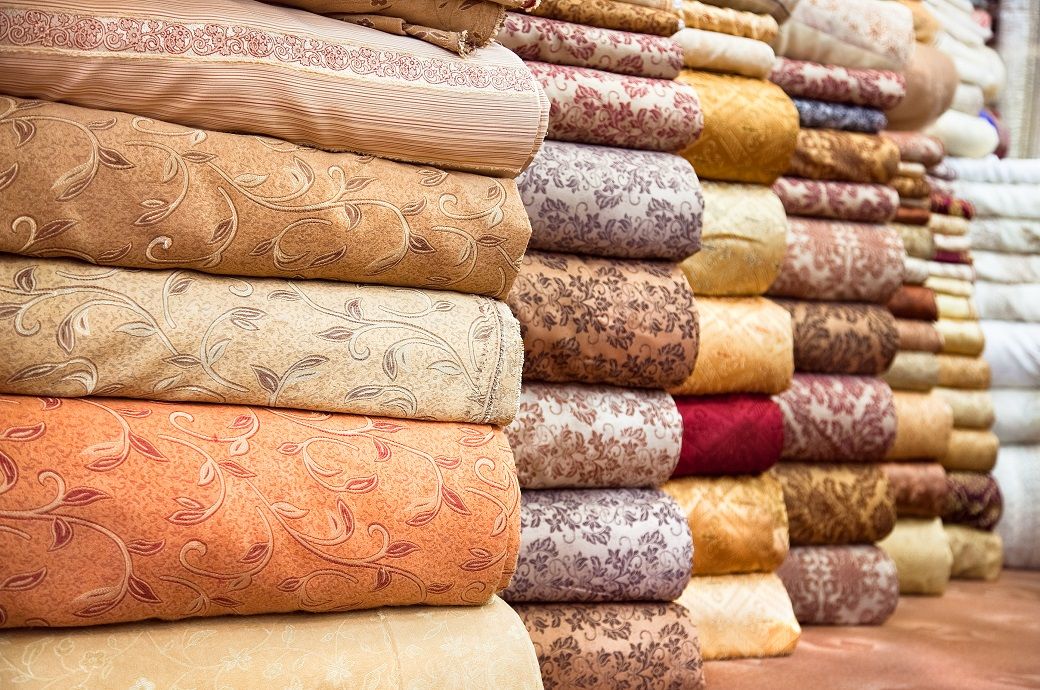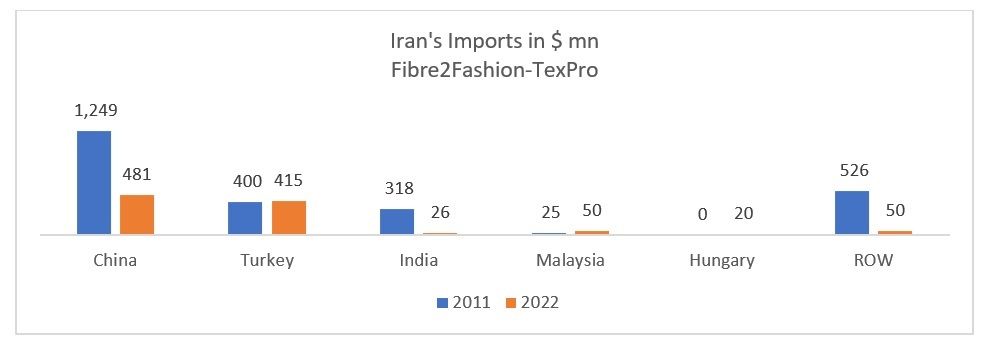
Iran’s textile, home textile and apparel imports from China and India decreased by over 61 per cent and 91 per cent, respectively, while imports from Turkiye, Malaysia and Hungary increased in 2022 as compared to 2011, according to Fibre2Fashion’s market insight tool TexPro. This decline can largely be attributed to economic and other sanctions imposed on Iran by the international communities.
Despite this, the country has experienced an uptick in textile imports from countries like Turkiye, Malaysia, and Hungary. This spike is likely indicative of the evolving roadmap of Iran's trade relationships and a testament to its determination to sustain and adapt its economy in the face of international challenges.
As regards to textiles, apparel and home textiles imports, China, Turkiye, India, Malaysia and Hungary are the major exporters to Iran and contributed nearly 94.83 per cent of the total textile imports in 2022.

The country has been increasingly focusing on domestic production and implementing import substitution policies, aiming to energise local industries and diminish dependence on imports.
Historically, Iran has been reliant on a broad range of imported goods, including machinery, technology, consumer goods, and textiles. However, due to international sanctions related to its nuclear programme, the nation's access to global markets and financial services has been significantly curtailed, stunting its ability to conduct international trade.
In response to this trade constraint, Iran has embarked on an ambitious journey to diversify its economy and promote domestic production. The initiative has seen Iran encouraging local industries to produce goods that were previously imported, moving towards an import substitution industrialisation model.
Moreover, Iran has been actively seeking to strengthen its economic ties beyond the confines of the sanction's regime. It has forged trade relationships with neighbouring countries such as Turkiye, Iraq, and the United Arab Emirates (UAE). Additionally, Iran is also seeking trade partnerships with nations like Russia, China, and India, with a view to diversify its trade relations and broaden its export markets.
A significant blow to Iran's economy has been the impact on its oil exports, previously one of its main sources of revenue. Due to the sanctions, Iran's capacity to export oil and access the international banking system has been severely limited.
Fibre2Fashion News Desk (MI - WE)